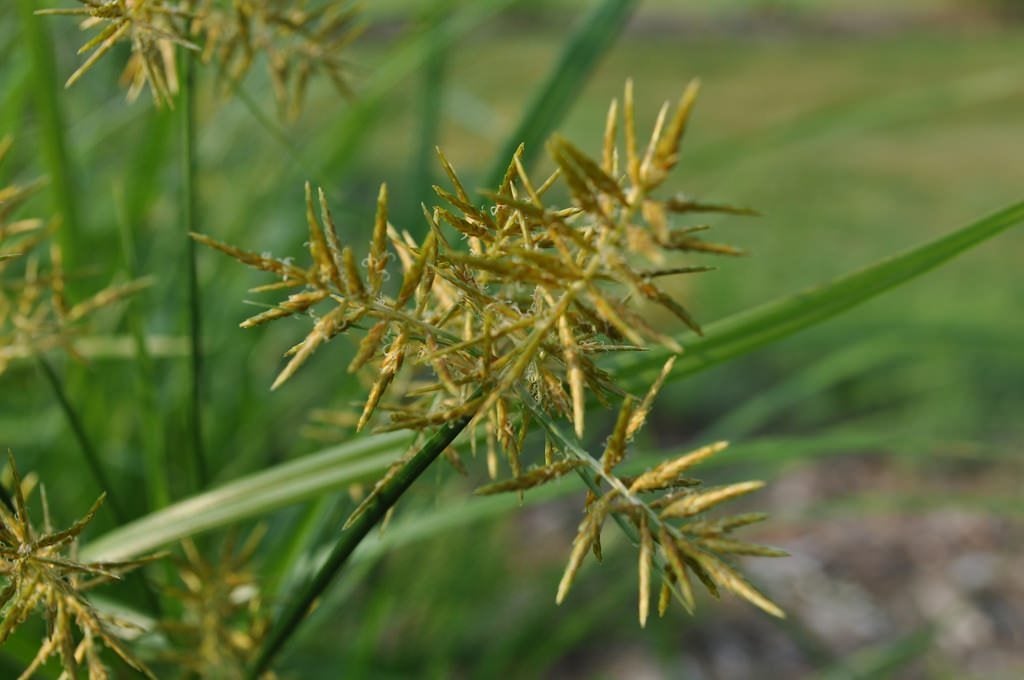Yellow Nutsedge Info - Learn About Yellow Nutsedge Control


Wild plants that function as food for you and animals may change your notion of the classification "weed." Yellow nutsedge plants (Cyperus esculentus) are also called earth almonds due to the tuber's similar flavor. While not on local restaurant menus yet, this weed is also related to Egyptian papyrus, an early paper source. If you're curious about those spiky perennial weeds in your garden, read more yellow nutsedge info. You may actually have an interesting gem growing in your garden.
What is Yellow Nutsedge?
For many gardeners and professional growers, yellow nutsedge is not only a nuisance plant but a menace. While it is true the plant can spread like wildfire, managing yellow nutsedge is just a matter of recognizing the plant and then applying some gentle organic products that are effective if used consistently and at the right time of the year. Manual cultivation and removal are also useful yellow nutsedge control in low population areas. Yellow nutsedge looks a bit like turfgrass but is actually in the sedge family. It has a triangular central stem from which thick blades radiate. The stem is hollow, erect, and hairless. The plant produces tubers or nutlets under the soil singly as opposed to its cousin, purple nutsedge, which grows chains of nutlets. Light brown spikelets appear in summer developing tiny, football-shaped seeds. This is a plant that prefers moist conditions and can be a problem in overly irrigated fields, ditches, and along waterways. Yellow nutsedge plants are most prevalent in full sun conditions.
Fun Yellow Nutsedge Info
When properly prepared, the tubers of yellow nutsedge have an almond to Brazil nut mildness. These tubers were once roasted and ground up to make a cinnamon, cocoa-like beverage. For this purpose, it is still grown in the Spanish-Mediterranean region. The tubers’ sweet, nutty flavor also makes them wonderful in desserts and other dishes. They were also pounded into a paste as a marzipan substitute in poor regions. These tasty tubers spread underground through rhizomes and can establish easily from just a few hitchhiking tubers on farm equipment, tools, or even your clothing. So if you aren't planning on making your own "horchata de chufa" (a popular beverage), managing yellow nutsedge in your garden is a must.
Yellow Nutsedge Control
Like most sedge weeds, control options vary. There are many chemical formulas recommended in yellow nutsedge info online and in garden publications. Many of these are potentially toxic and can affect your landscape long term. Organic methods include hand pulling, but you have to get all the attached nutlets or the plant will simply start over the next spring. Correcting drainage problems and establishing healthy turfgrass can prevent much of the invasion of these little plants. Horticultural grade vinegar is a safe weed killer for nutsedge. Make sure you get horticultural grade, as the store bought varieties are not acidic enough. A new product, horticultural molasses, seems to have the organic kick needed to take out nutgrasses. As with any product, follow the usage and application methods recommended.
Sign up for the Gardening Know How newsletter today and receive a free copy of our e-book "How to Grow Delicious Tomatoes".

Bonnie Grant is a professional landscaper with a Certification in Urban Gardening. She has been gardening and writing for 15 years. A former professional chef, she has a passion for edible landscaping.